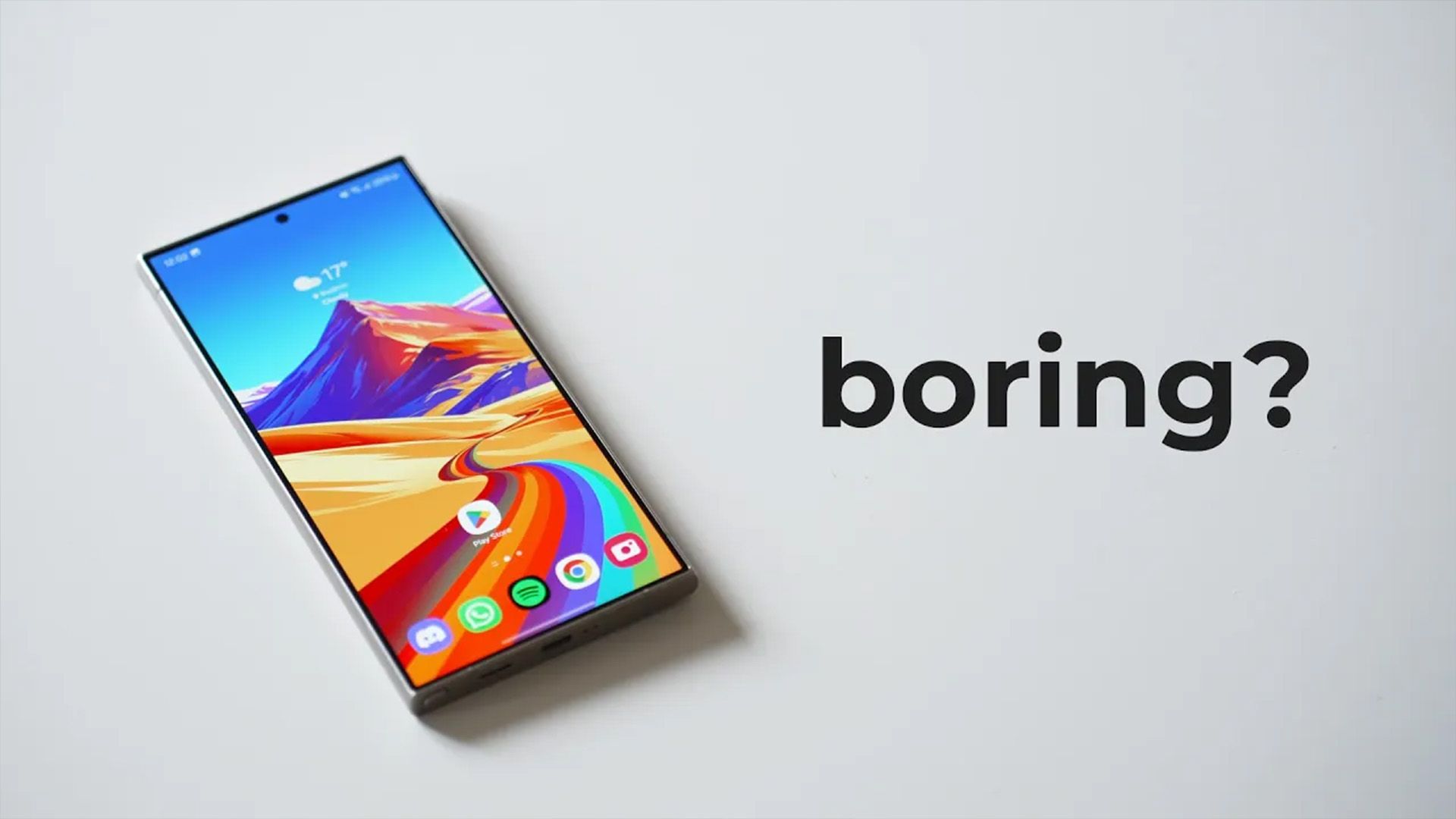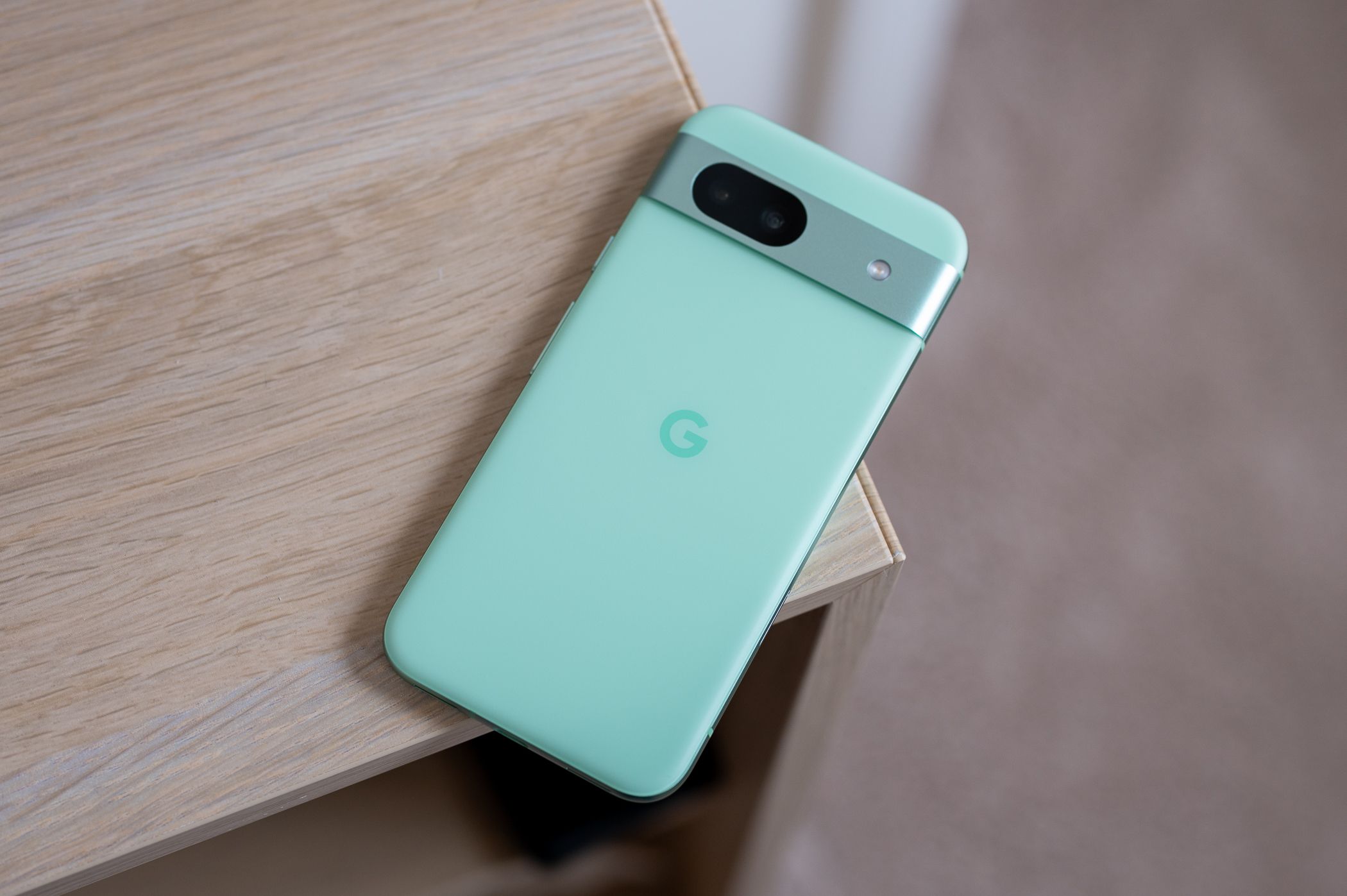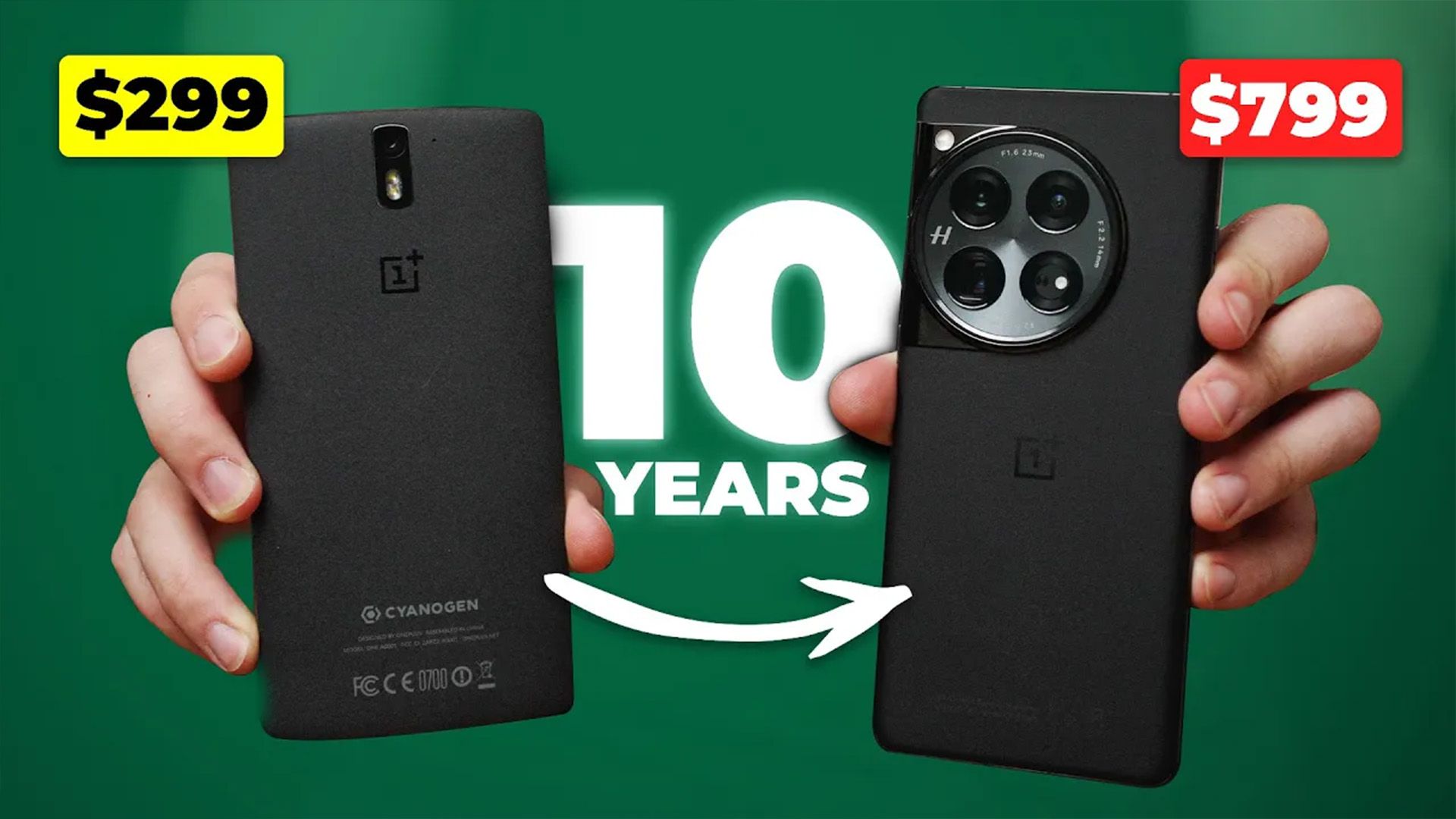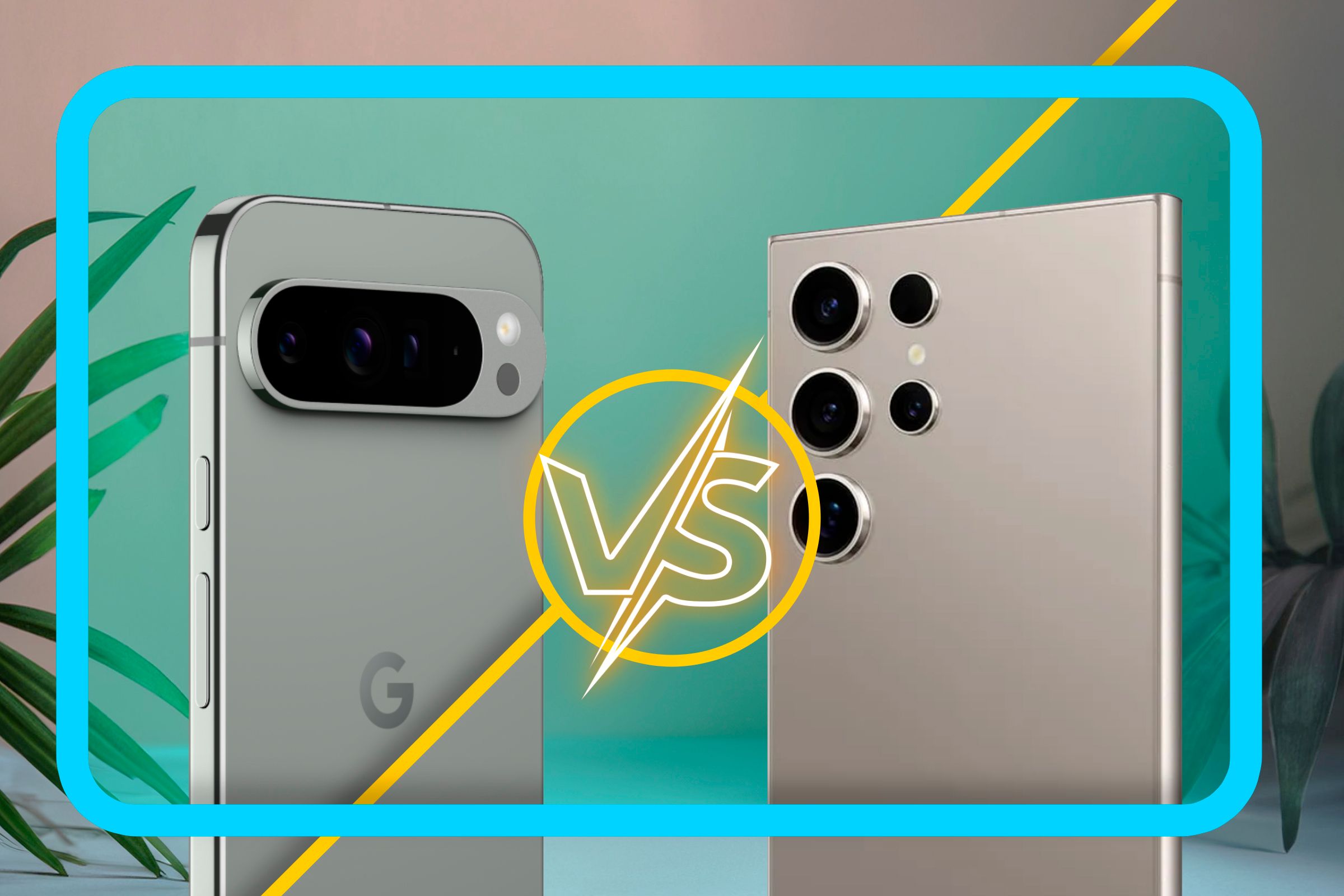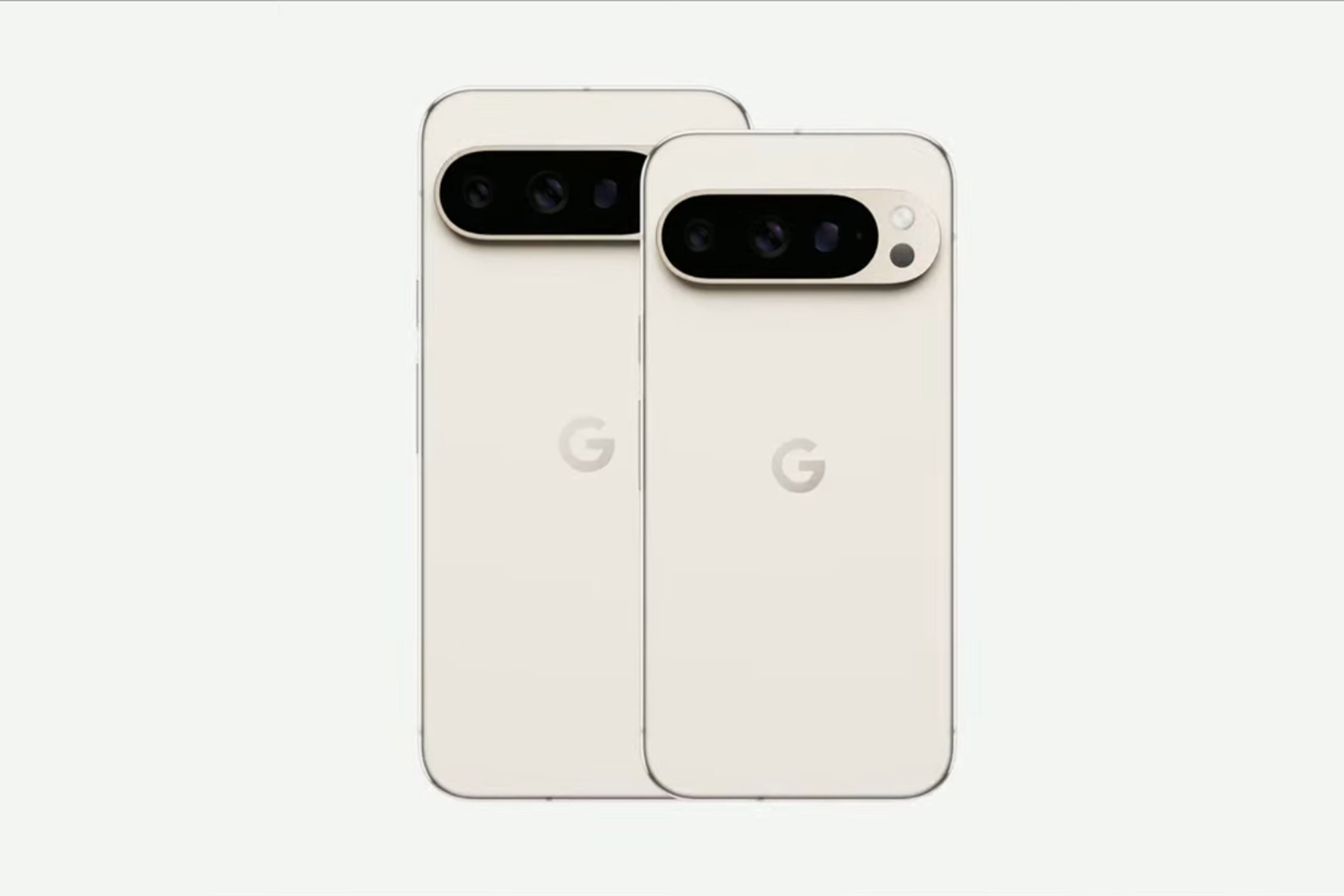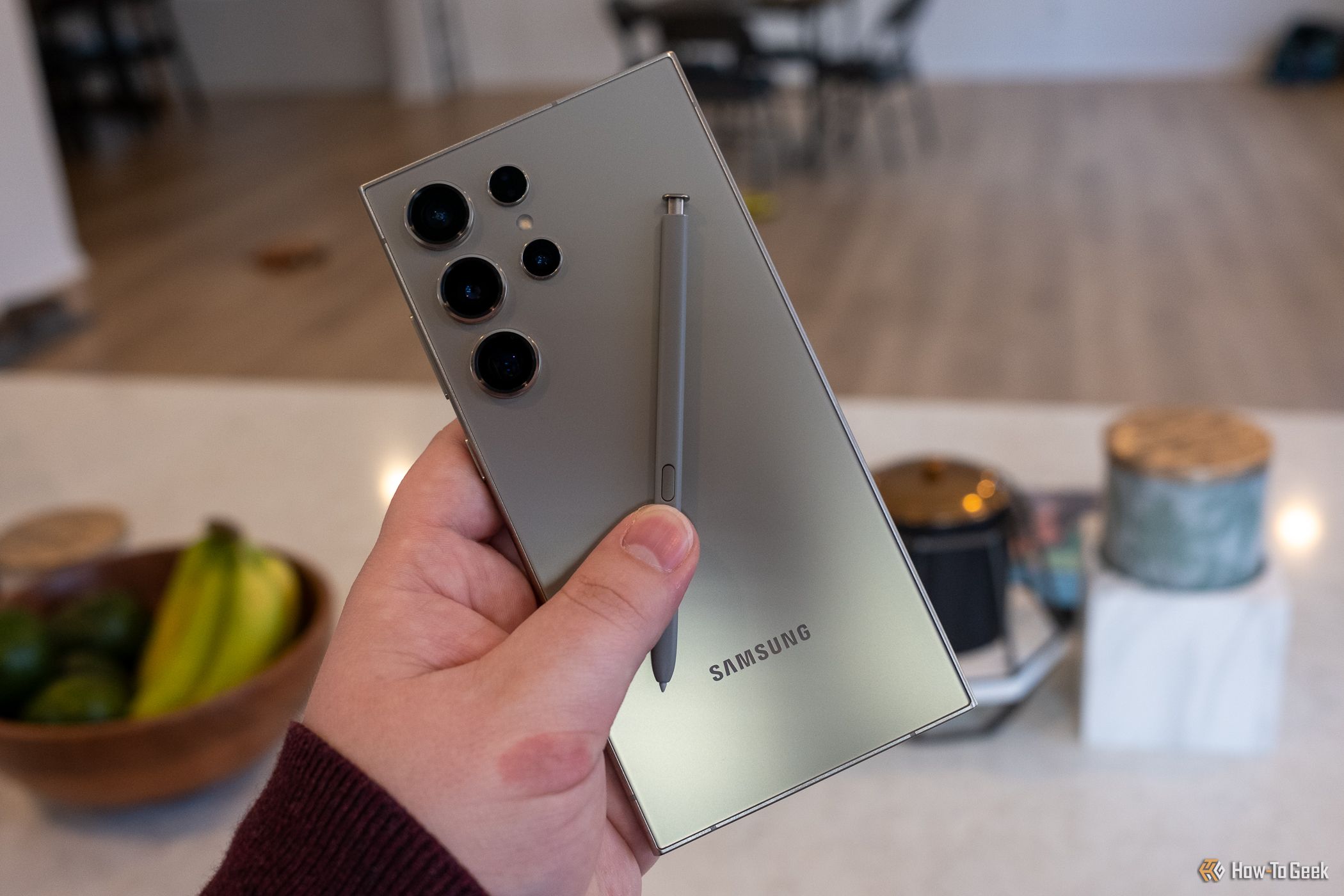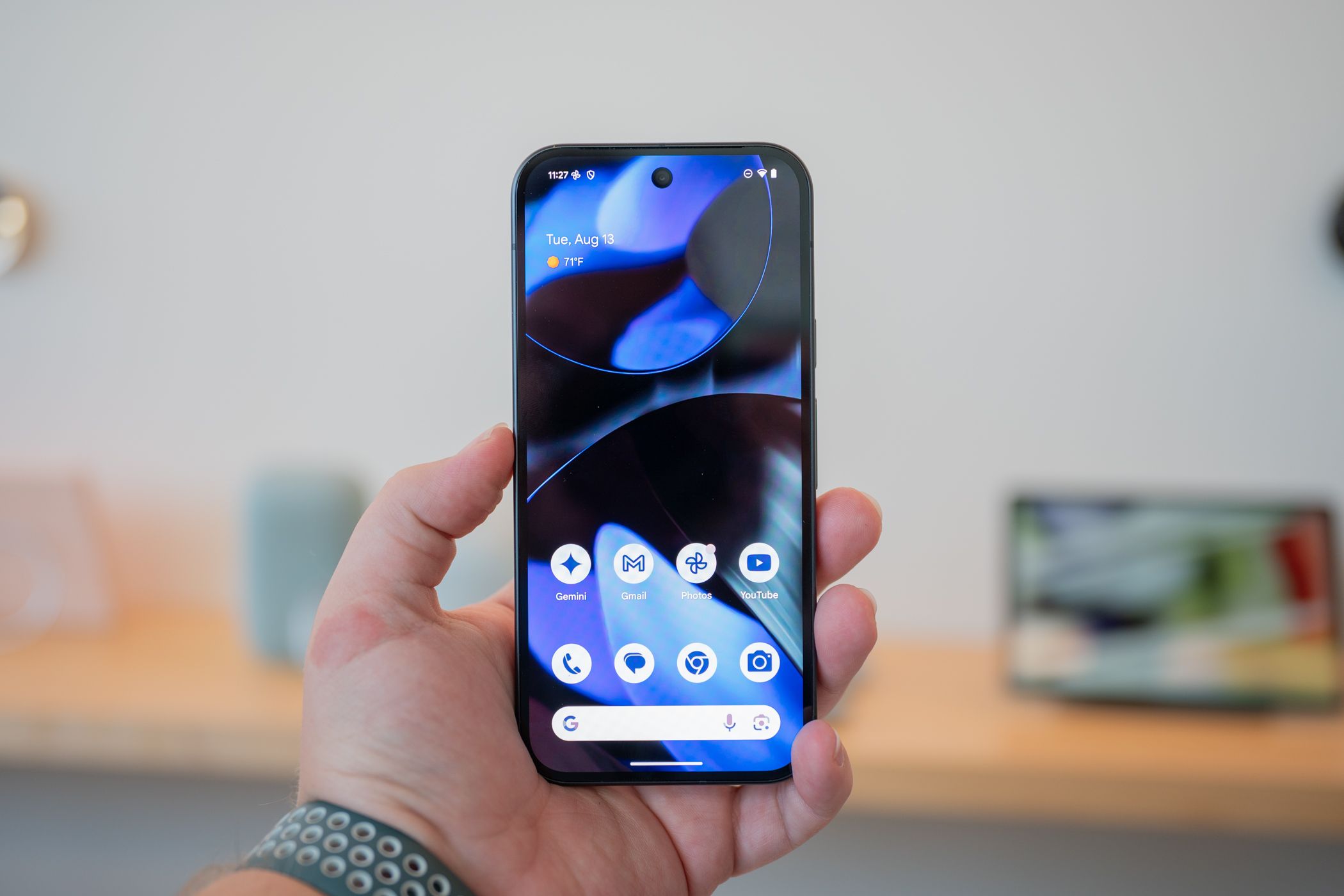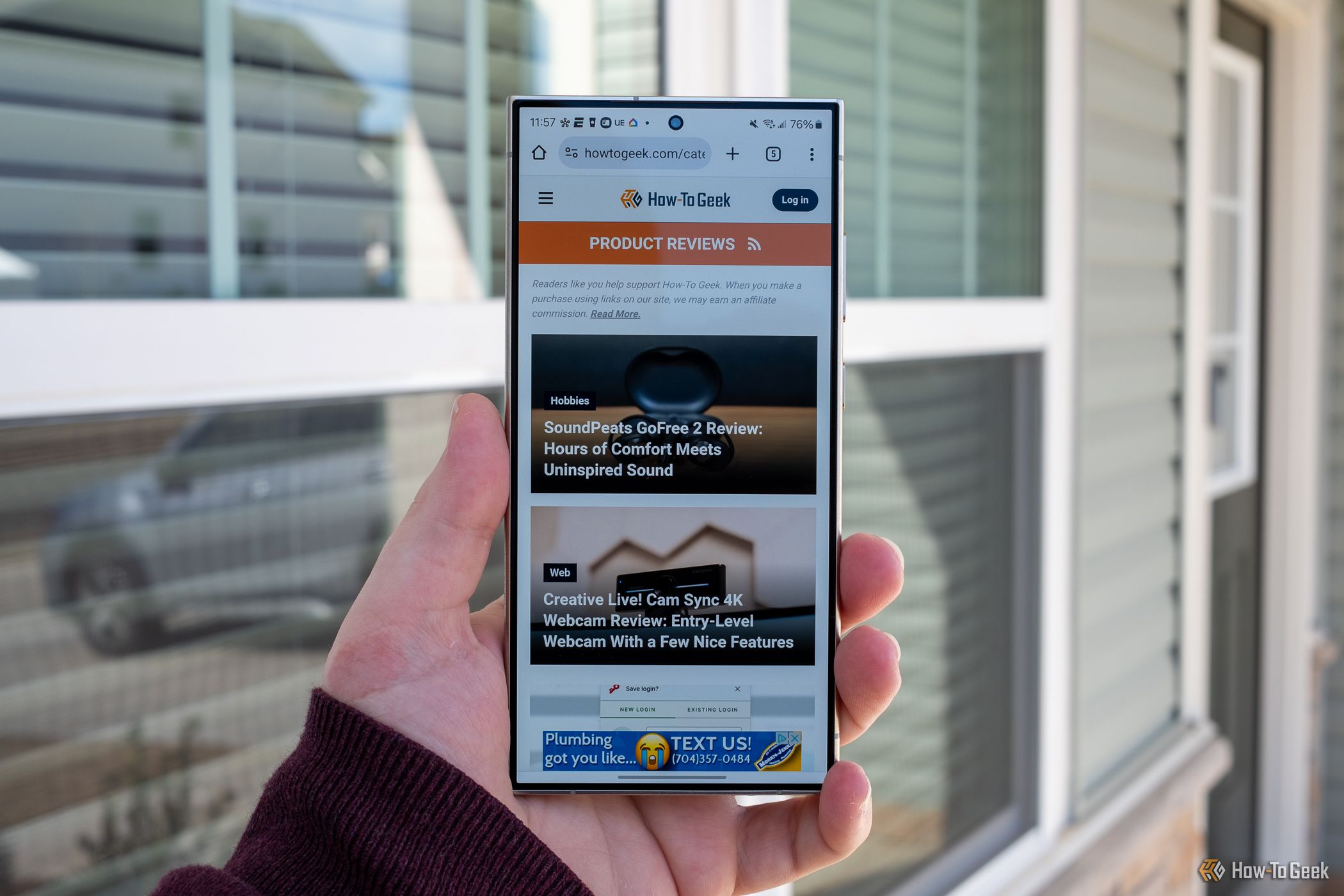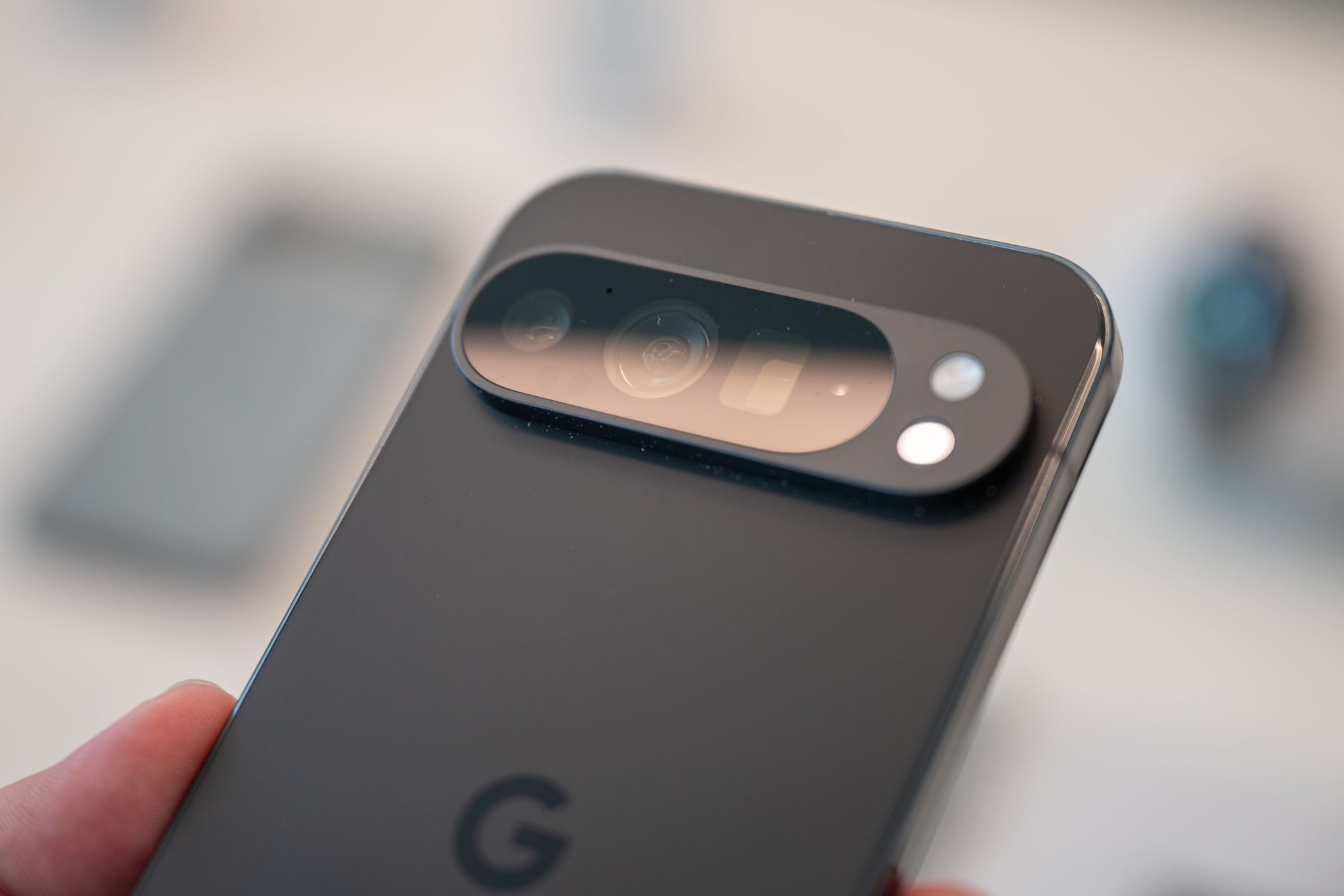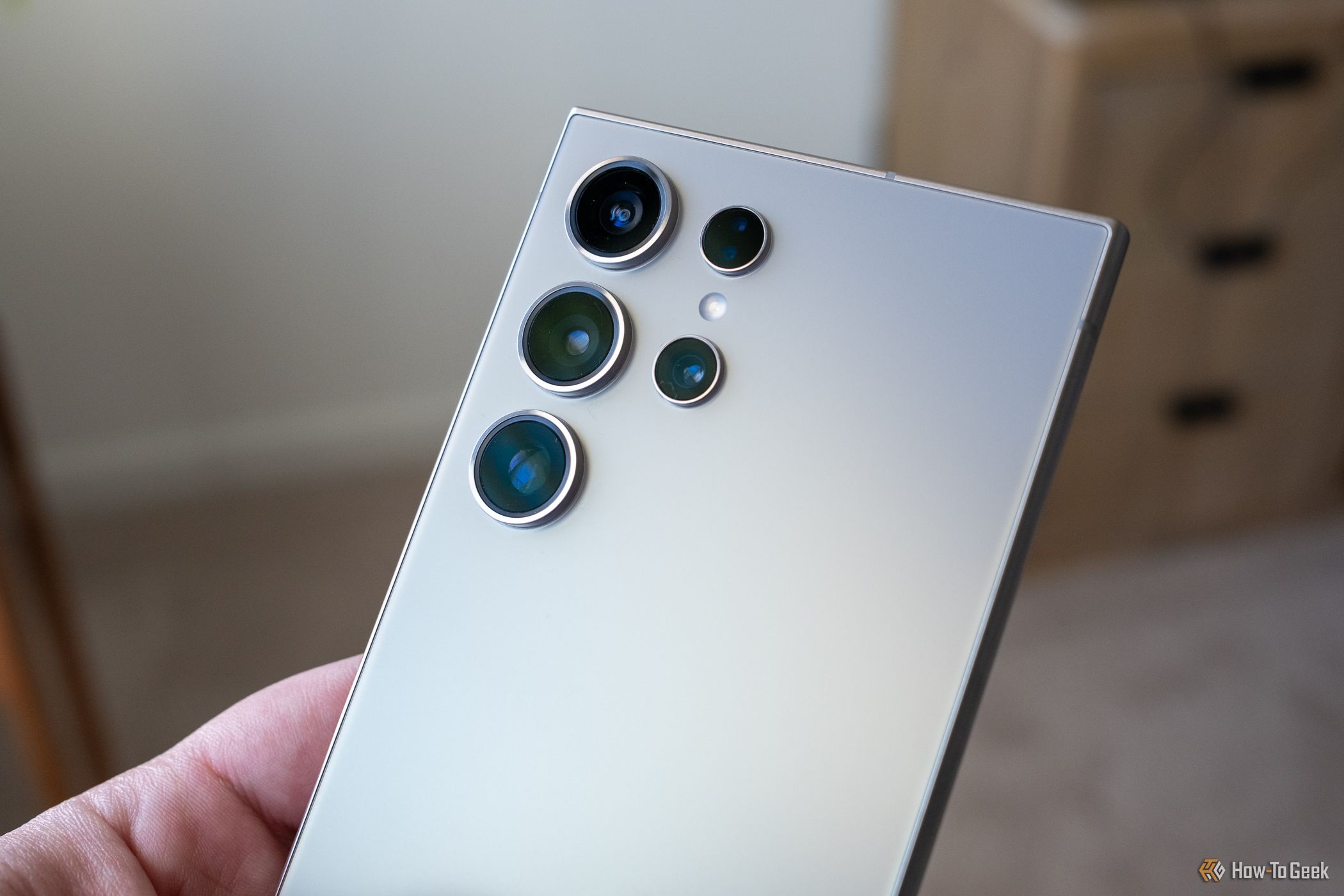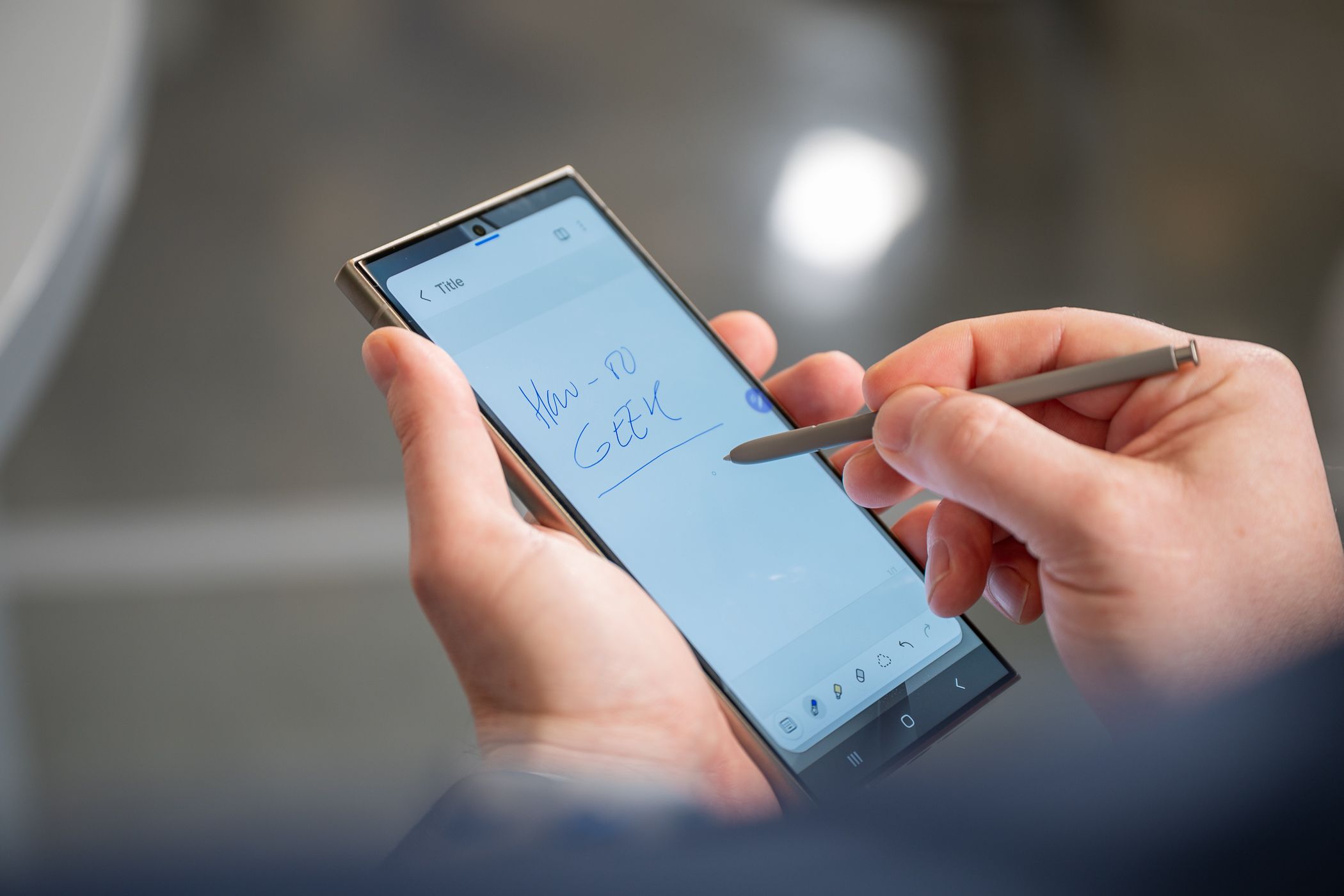Pixel 9 Pro XL vs. Samsung Galaxy S24 Ultra: Which Is the Best Android Flagship?
Android
Quick Links
-
Price and Availability
-
Design, Dimensions, and Color
-
Display
-
Processing Power and Storage
-
Camera and Editing Software
-
Battery Life
-
Android Upgrades
-
Which Is Right For You?
Key Takeaways
- The Pixel 9 Pro XL (128GB) costs $1,099, while the Galaxy S24 Ultra (256GB) is $1,299.
- The Pixel 9 Pro XL features a fresh design with multiple finish options. It has an 6.8-inch screen and is slightly lighter and taller than the S24 Ultra.
- The Galaxy S24 Ultra has an additional telephoto camera, the S Pen, and a more powerful chipset.
The Pixel 9 Pro XL is Google’s response to Samsung’s S24 Ultra. It features a similar display, a powerful processor, and one of the most capable camera systems on a Pixel smartphone.
So, what are the differences between the two phones? Has Google managed to dethrone the S24 Ultra, or does it take the second place? Let’s find out.
Price and Availability
The Pixel 9 Pro XL costs $1,099 for the baseline model with 128GB of storage and launches on August 22, 2024.
The Galaxy S24 Ultra released in January 2024 and costs $1,299 for the 256GB variant.
Design, Dimensions, and Color
While companies like Google and Samsung have settled with their signature design, Google has tried to make the Pixel 9 Pro XL look slightly different from its predecessor, the Pixel 8 Pro. So, instead of a camera module that merges into the side frames, it has an oblong camera island that runs through the phone’s width but ends right before the frame.
The phone has a polished frame (with flat edges) with round corners, a silky matte back panel (made using Corning’s Gorilla Glass Victus 2), and a punch-hole display. It’s available in four colors: Porcelain, Rose Quartz, Hazel, and Obsidian.
It measures 162.8 x 76.6 x 8.5 mm and weighs 221 grams.
The Galaxy S24 Ultra, on the other hand, has little to no physical upgrades over its predecessor. It has the same flush camera design, a punch-hole screen, and symmetrical bezels on all sides. However, unlike the Pixel 9 Pro XL, the phone has a titanium frame and Corning Gorilla Armor, which adds durability to its structure. The edges are slightly curved, which should result in a different in-hand feel, while the corners are boxy.
For those who like to carry phones with a unique color, the Galaxy S24 Ultra has more options to choose from: orange, green, blue, yellow, violet, black, and gray.
It measures 162.3 x 79.0 x 8.6 mm and weighs 232 grams.
Overall, both smartphones carry a similar form factor, except for the colors, the in-hand feel, and the fact that the S24 Ultra is slightly heavier. Both come with an IP68 dust and water resistance rating.
Display
Taking after the Pixel 8 Pro, the Pixel 9 Pro XL features a 6.8-inch Super Actua display, which is Google’s way of saying that the phone ships with a super clear, bright, and smooth display that delivers an excellent experience. The screen has a pixel density of 486 ppi, supports a variable refresh rate between 1-120Hz (thanks to LTPO technology), and features Corning’s Gorilla Glass Victus 2 protection.
Other screen features include HDR support and 24-bit depth for 16 million colors. The most interesting part is that the Pixel 9 Pro XL’s screen supports 2,000 nits of peak HDR brightness and 3,000 nits of local brightness.
The Galaxy S24 Ultra features a somewhat similar 6.8-inch Dynamic LTPO AMOLED 2X screen with a pixel density of 505 ppi and a variable refresh rate between 1-120Hz. Instead of Gorilla Glass, Samsung’s flagship sports the new Gorilla Armor glass, an enhanced version of the company’s toughened glass. It’s more durable, scratch resistant, and reduces reflection by up to 75%, which is something that creates a lot of difference in the viewing experience.
Last but not least, the screen has a color depth of 16M and supports HDR10+ content. Unlike the Pixel 9 Pro XL, Samsung only advertises a peak brightness of 2,600 nits.
The bonus, however, is the inclusion of S Pen on the Galaxy S24 Ultra. With the input device, you can take notes, edit pictures with precision, and snap pictures from a distance.
Processing Power and Storage
Like every year, Google has equipped the Pixel 9 Pro XL with a new processor, the Tensor G4. The chipset features an eight-core CPU structure with a 3.1GHz prime core, Mali-G715 GPU (940MHz), and Exynos 5400 modem, which is about 50% more efficient than its predecessor.
There’s a vapor chamber that helps sustain peak performance for a longer duration. The processor doesn’t break any benchmark records, but combined with 16GB of LPDDR5X RAM, it shouldn’t shy away from handling multiple apps, 8K video recording and all the AI-powered features the Pixel series has.
The phone comes in four storage variants: 128GB, 256GB, 512GB, and 1TB.
In comparison, the Galaxy S24 Ultra features one of the most powerful chipsets on Android phones, the Snapdragon 8 Gen 3. The processor has a 3.39GHz prime core, Adreno 750 (1GHz) GPU with support for ray tracing, and a Snapdragon X70 5G modem. The processor scores better in benchmarks and comes with 12GB of LPDDR5X RAM. Like the Tensor G4, the Snapdragon 8 Gen 3 also features a vapor chamber.
It comes in three storage variants: 256GB, 512GB, and 1TB.
Even though the Pixel 9 Pro XL features the most powerful chipset engineered by Google, it’s no match for the Galaxy S24 Ultra. So, if you’re into smartphone gaming, video editing, or casual designing, consider going with Samsung’s flagship.
Camera and Editing Software
The Pixel 9 Pro XL features the best camera array used on a Pixel phone. The triple camera setup comprises a 50MP (f/1.68) primary sensor, a 48MP (f/1.7, 123°) ultrawide sensor that doubles as a macro shooter, and a 48MP (f/2.8, 5x zoom) telephoto sensor.
With the capable hardware, the phone has multiple photo and video-centric features, such as Pro Controls, High Res photo, Super Res Zoom (up to 30x), Add Me, Video Boost, and Night Sight Video. It also boasts Gemini-powered features like Magic Editor, Magic Eraser, Best Take, Photo Unblur, and more. For the first time, the phone supports 8K video recording at 30 fps. On the front, users get a 42MP (f/2.2, 103°) selfie shooter.
On the other hand, the Galaxy S24 Ultra flaunts a 200MP (f/1.7) primary sensor, a 10MP (f/2.4, 3x zoom) telephoto sensor, another 50MP (f/3.4, 5x zoom) periscope sensor, and a 12MP (f/2.2) ultrawide sensor. Hence, while the Pixel 9 Pro XL zooms in on the primary sensor, the S24 Ultra switches to the dedicated zoom lens upon crossing 3x, resulting in slightly better pictures.
Samsung packs a couple of generative AI-based photo editing features, but they aren’t as elaborate as those on the Pixel. You still get 8K video at 30 fps, Space Zoom (up to 100x), and a 12MP (f/2.2) selfie shooter.
While both the phones have top-notch camera setups, Google does better at the software part, while Samsung provides more versatility with additional hardware.
Battery Life
The Pixel 9 Pro XL ships with a 5,060 mAh battery cell, which happens to be the largest battery on a Pixel phone. Further, the phone supports 37W fast charging via the company’s 45W USB-C power adapter (sold separately) and can last over 24 hours in the regular mode. With Extreme Battery Saver mode, the battery life can go up to 100 hours. The phone can charge up to 70% in about 30 minutes, and it also supports wireless charging at 23W when charging with the Pixel Stand (2nd Gen).
The S24 Ultra also packs in a 5,000 mAh battery that supports slightly faster wired charging at 45W (and wireless charging at 15W). Samsung also mentions that the battery can provide up to 30 hours of video playback on a Wi-Fi network. The phone can charge up to 65% in about 30 minutes.
Android Upgrades
Whether you choose the Pixel 9 Pro XL or the Samsung Galaxy S24 Ultra, you’ll get seven years of major operating system upgrades, along with security fixes and other feature drops.
While Samsung doesn’t promise anything related to new features, Google releases Pixel Drops every three months, unlocking new features on existing Pixel smartphones. The Pixel 9 Pro XL runs on the stock version of Android 14, with Android 15 coming later in 2024.
The S24 Ultra ships with One UI out of the box, which is Samsung’s custom UI based on Android. Currently, the phone runs on One UI 6.1, based on Android 14, but Samsung is already working on One 7.0, which will based on Android 15. Between stock Android and One UI, the former offers a cleaner UI, while the latter is full of features and customizations.
Both brands have their own suite of AI-based features, termed Google AI and Galaxy AI, each with signature features. For instance, the Add Me and Pixel Screenshots on the Pixel 9 series are pretty impressive, while Chat Assist and Sketch to Image are among the best GenAI features on Samsung’s flagship.
Which Is Right For You?
If you’re into the stock Android experience and want a slightly better front-facing camera, more photo and video editing features, and a modern-looking smartphone, go with the Pixel 9 Pro XL. The phone is an excellent upgrade using an older Pixel model, like the Pixel 6, Pixel 7, or another Android smartphone. Further, it is $100 cheaper than the S24 Ultra’s 256GB variant, making it the more affordable option.
However, if having one of the most capable chipsets, an additional telephoto camera, the S Pen, and all the additional One UI features matter, go with the S24 Ultra. The flagship is an easy recommendation for anyone using an older Samsung smartphone, perhaps one from the Galaxy S21 or the Galaxy S22 series.
Given that the S24 Ultra came out in January 2024, there’s a good chance that you can get the phone for a significant discount. Look out for deals on the baseline model with 256GB of storage. For example, it reduced to $974.99 during Amazon’s Prime Day, which is a steal. It’s difficult to find a smartphone that is as good and practical as the Galaxy S24 Ultra, especially under $1,000.









